Marigolds, with compact yellow to deep orange flowers, are one of the easiest and most beautiful annuals to grow. You may have heard stories about how marigolds ward off every garden pest, from slugs and snails to rabbits, groundhogs, and even deer! Unfortunately, however, that is not the case. I had to learn the hard way that there are still some insects and animals capable of eating different parts of this plant. Read and find out what is eating my marigolds.
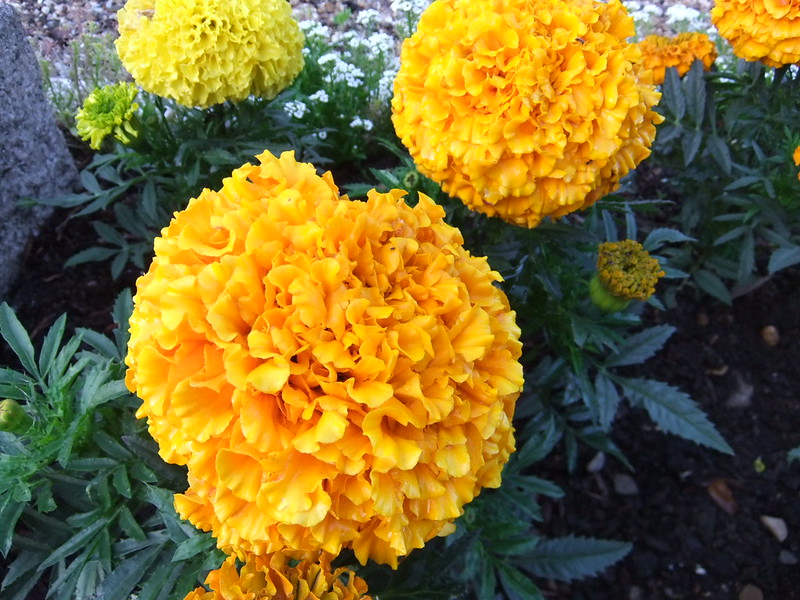
The most prevalent pests that devour marigold leaves are spider mites and grasshoppers.
Typically, a wide range of pests like spider mites, slugs, snails, and caterpillars can devour the leaves, foliage, and buds of marigolds and are good carriers of numerous plant diseases. Verticillium wilt, Botrytis blight, and root rot are some of the diseases that can cause the plant to lose its foliage and buds. The damage caused by these diseases frequently resembles that of an insect or animal attack on the marigolds.
Don’t be concerned, though! The following article will assist you in recognizing these pests and provide information regarding practical treatment methods.
RELATED: 26 Types Of Marigold Plants (Including Photos & Facts)
Insects
Insect infestations are among the most frequent causes of marigold damage. The following are some of the more common insects that contribute to this issue:
Slugs & Snails
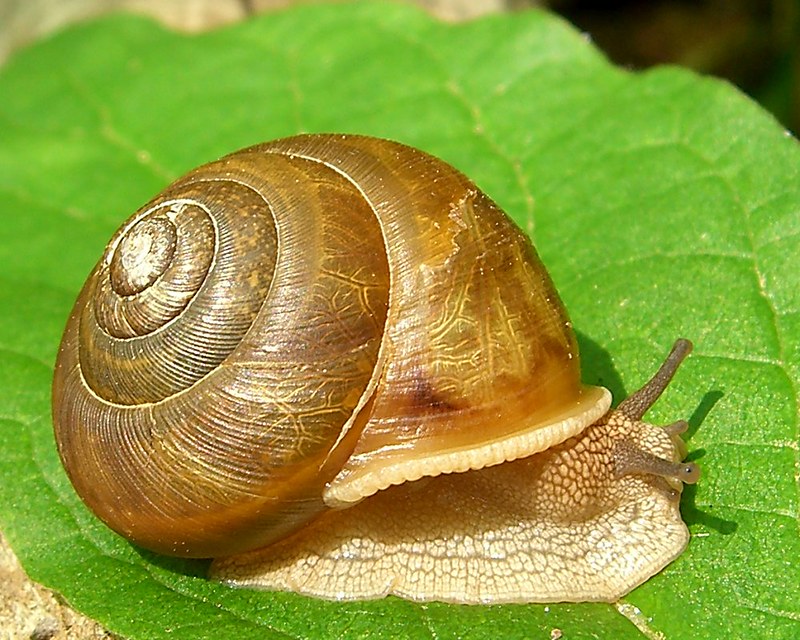
In cool, damp conditions, slugs and snails may be a significant problem for marigolds.
Moist soil under the short, dense marigolds provides shade and is a haven for slugs and snails. They live on the ground but can climb up on the marigolds.
Snails and slugs are nighttime eaters. When moving on plants, their bodies leave slimy trails behind, and that’s how you know slugs and snails are in action. Snails and slugs lay eggs on the marigolds, which hatch around April, and the hungry young ones start damaging the lower, softer parts of the marigolds.
Once these young ones mature, they can start further climbing onto the plant and wreak havoc on the leaves. They bore big holes in the leaves of the marigolds, and the eaten leaves turn yellow and eventually fall off the plant.
Control
There are several ways you can control snails and slugs. For instance, snails and slugs are attracted to the scent of yeast in beer. Therefore, beer traps can be placed near your marigolds. Snails and slugs will climb these containers and drown in them. Also, they can be hand-picked and removed from the plant. The best time to do that is at night when they are most active.
Another way to eliminate the snails and slugs is to use diatomaceous earth. The sharp edges of diatomaceous earth cut through the soft tissues of slugs and snails, causing extreme dehydration, which leads to their death.
Aphids
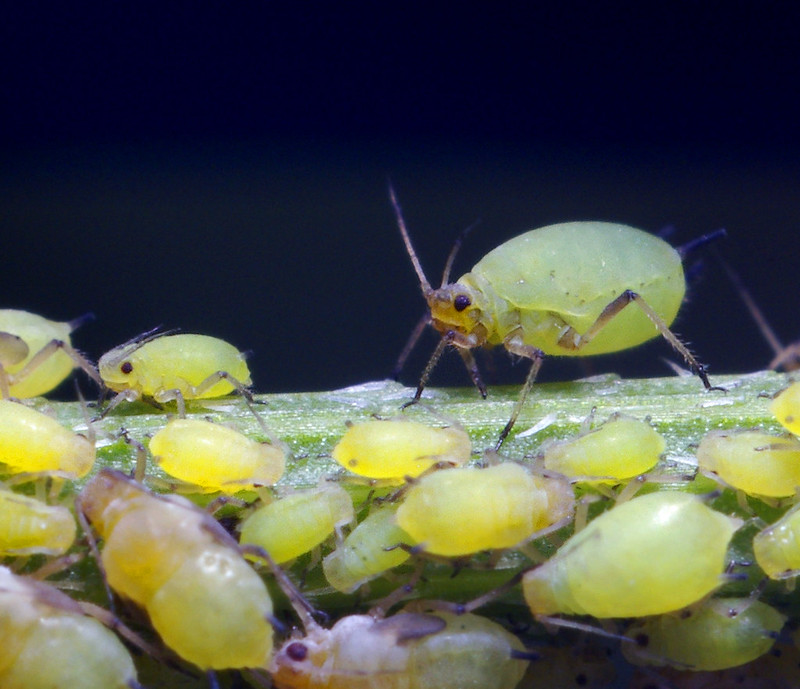
Aphids will not eat marigold leaves; instead, they poke holes and extract the sap.
Aphids are tiny insects found on the leaves of marigolds in summer. They are small and vary in color from green and orange to white and yellow. Aphids are good at hiding and can be found hidden under the leaves. The yellow color of the marigold flowers is their prime attraction to the plant.
Aphids do not eat the leaves but suck the sap out of them. If you see tiny holes and sticky residue on the leaves, be informed that your marigolds are hosting aphids. They leave a sticky secretion on the leaves, which is called honeydew. It is sweet and attracts ants to the plant, which can further damage your marigolds. Leaves with holes and sap sucked out of them eventually turn yellow and fall off the plant.
Control
Aphids can be beaten back from the marigolds by spraying water on them. Flowing water helps dislodge aphids from the plant, and they can not get back to the plant. However, you will have to repeatedly shower the marigolds for at least a week to get rid of them.
Another way is to apply diatomaceous earth to the plant, but make sure you rub it on both sides of the marigold leaves to get the best results. Insecticidal soap and neem oil sprays also help remove the aphids from the plant.
RELATED: Aphids on Indoor Houseplants: 10+ Smart Ways to Get Rid of Them!
Thrips
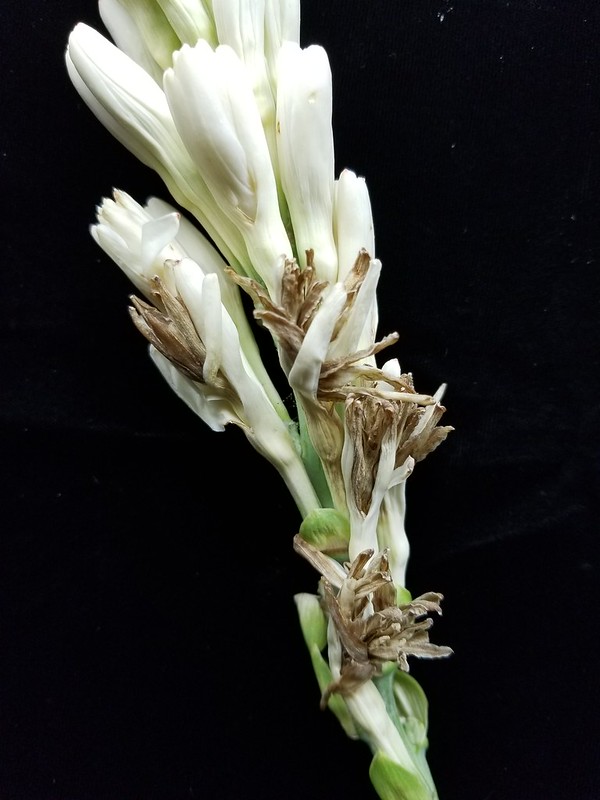
Marigolds appeal to thrips and are used as an indicator plant for drawing thrips out of a crop.
Thrips are tiny insects with wings that damage marigolds in the same way as aphids. They are about 1/25 inches long, and their small size makes it difficult to control them. Due to the resemblance in damage caused by aphids and thrips, sometimes it gets difficult to tell whether it is an aphid or a work of a thrip.
They suck the sap out of leaves by boring tiny holes in them, which turns the leaves yellow, eventually killing the plant. In addition, since they are winged, they can cause more damage as compared to aphids by quickly flying from one plant to another.
Control
Spraying neem oil mixed with insecticidal soap can produce the best results against thrips without harming the foliage of marigolds. The spray can be repeated after 24 hours.
To begin, it would be better to spray just one leaf and check for any adverse reaction shown by the leaf, as sometimes, insecticidal soap may damage the plant.
Introducing predatory mites and nematodes can also help control thrip infestation by managing their population as they feed on thrips’ eggs.
Spider Mites
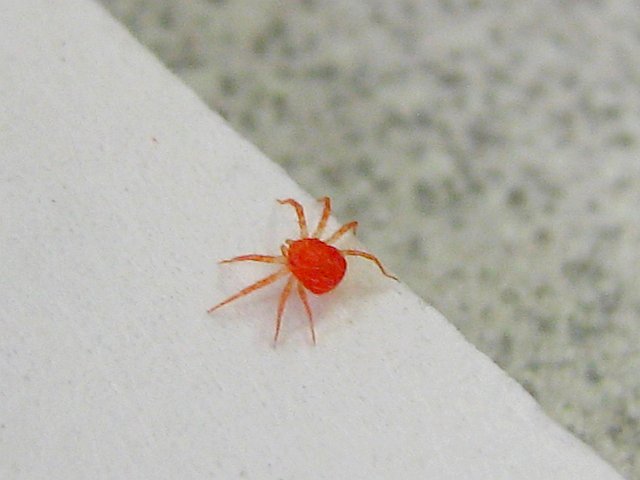
The short version is that marigolds do not deter spider mites. They draw them in.
You may return from a vacation and see your marigolds covered with cobwebs. This is a clear indication that spiders have colonized your marigolds. Spider mites are tiny creatures that measure around 0.04 inches.
They have the same eating pattern as aphids and thrips. They poke holes in the leaves of your marigolds and enjoy the leaf sap. The resultant lack of nutrients in plant tissues turns leaves yellow, and they eventually fall off.
Control
If spraying water several times a week doesn’t work, neem oil and insecticidal soap can be used to control spider mites on marigolds. Just be careful and watch for any signs of the adverse reaction shown by leaves. Repeat weekly, and the spiders will leave your marigolds.
RELATED: Russet Mites vs. Spider Mites: Their Differences and Management For Plant Good
Animals
Marigolds are known to deter various animals due to their strong flavor and odor. However, there are still some animals that consume the blooms as well as their leaves.
Birds
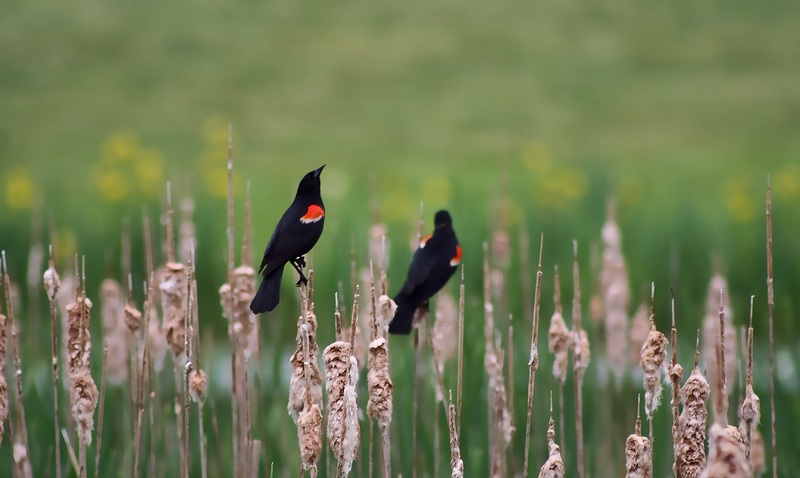
Birds don’t necessarily eat marigolds but are attracted to insects and tear up plants in search of them.
The beautiful yellow-orange flowers of marigolds can attract some unwanted guests, including birds like crows, robins, blackbirds, etc. You must be thinking, what do birds have to do with leaves and flowers? Birds are intelligent creatures and know where to find their food. They come for the insects living in your marigolds. One may think it is suitable for the plant, but that is not the case as their sharp beaks damage the foliage.
Control
Birds can be kept away from your marigolds by using various strategies like keeping bird food and water away from your marigolds.
Bird scaring can also be tried by hanging shiny ribbons or placing scare-crows in the garden, but birds can get used to those after some time, and it may not work long term.
Netting is another method for protecting your marigolds from birds.
Rodents & Mammals
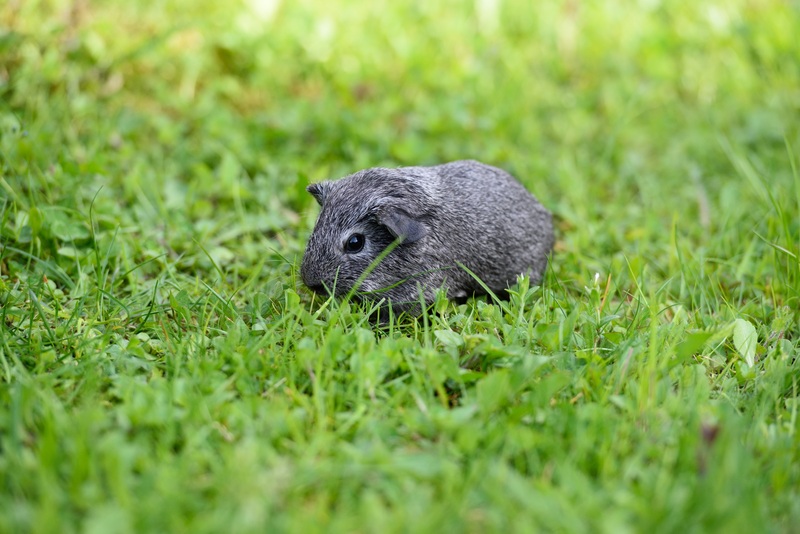
Marigolds don’t repel rodents, such as mice, voles, rats.
The pungent smell of marigolds can usually keep the animals away. Still, in some cases, they can reach your marigolds unintentionally by trying to cross them to go for other plants. This can cause significant damage to the marigolds.
Your pets like dogs and cats can also harm your marigolds playfully, or they may eat leaves to treat their infected stomachs and digestion issues. Cat pee can prove disastrous to your marigolds, so it is better to keep cats away from your marigolds.
Control
Marigolds can be protected from rodents and mammals by putting a fence around them. However, ensure that the fence is at least 6 to 10 inches deep in the ground so that rabbits and other animals can not dig beneath it.
Diseases
Sometimes diseases affect marigolds the same way as pests do. Therefore, it is essential to know the difference between disease-caused and insect damage to control it.
Root Rot
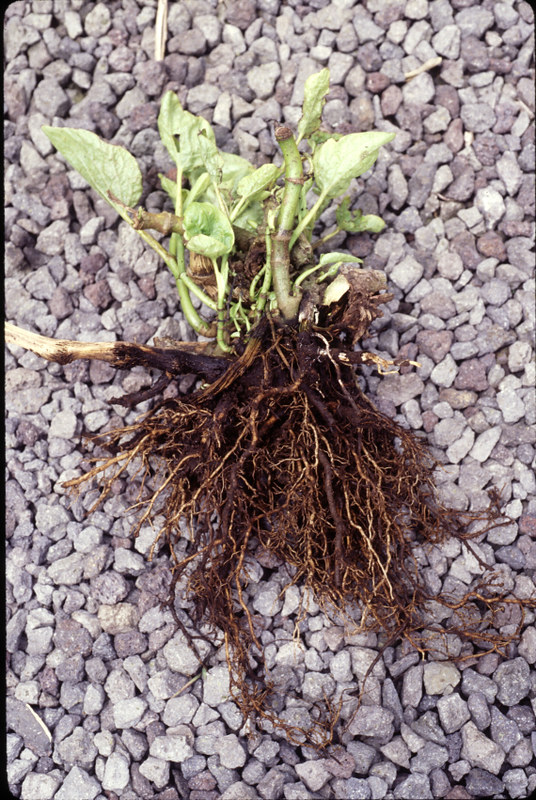
Root rot is a fungal infection that damages the roots of trees that grow in wet soil.
Overwatering and water accumulation due to poor drainage in the pot of marigolds can cause the roots to rot. If you examine the roots, you will find them turned brown, soggy, and smelly! Rotted roots will lose their function, and the plant will start turning yellow and die.
Control
Root rot can be avoided by carefully watering your marigolds. Do not water your marigolds more than one to two inches when they are dry. Your garden or container should also have proper drainage so excess water can flow away from the roots.
The other way to control root rot is to cut off the rotten roots from the plant, but if all the roots are already spoiled, nothing can be done to revert the damage.
Botrytis Blight

Botrytis blight is a fungal disease that causes devastating losses for ornamental plants.
Botrytis blight is a fungal disease that also attacks plants growing under moist conditions. You may notice brown spores on the foliage; such symptoms are at their peak during the rainy season. If not managed in time, the infection can spread to the entire plant.
Control
Examine the leaves affected by botrytis blight, and cut them using a pruner.
Make sure you disinfect the pruner with alcohol or any other disinfectant before using it on another plant; otherwise, it may spread the infection to other plants in your garden.
Fungicide spray is also effective in containing the infection.
Conclusion
After reviewing this list, you should realize that marigolds are not entirely resistant to parasites and insects. However, you can significantly reduce the frequency of insect infestations by making the garden dry, weed-free, and tilling the soil after winter. In addition, if nothing else seems to be working, you always have the option of using the necessary chemical treatments in order to resolve the issue.
Frequently Asked Questions
What can I spray on my marigolds?
Insecticidal soap sprays work well against several pests that frequently attack marigolds. You can easily make a marigold insecticidal spray to ward off flies, tomato hornworms, mosquitoes, asparagus beetles, and leaf-cutting insects.
Do squirrels eat marigold plants?
Due to their strong scent, marigolds are unlikely to be consumed by squirrels. However, when in need of food, gophers, squirrels, rabbits, and chipmunks would try to munch on the leaves and blooms. Additionally, they might harm the marigolds when looking for other items in your garden.
What types of caterpillars eat marigolds?
There are numerous species of caterpillars that consume marigolds as their food source. Unfortunately, caterpillars and slugs are notorious for eating marigolds, and they frequently damage young, fragile plants by making big holes in the leaves.
How come my marigolds are dying?
It’s possible that overwatering or underwatering your marigold plant can cause it to wilt. However, remember that a wilting marigold plant does not always need water. Marigolds may also wilt if they are damaged by leafhoppers, spittlebugs, aphids, snails, or slugs.
Can you use Sevin dust on marigolds?
Sevin is not harmful to flowers when applied appropriately. However, excessive use of Sevin can harm flowers in the long run by encouraging insects to develop resistance to the chemical. However, this product is not effective at preventing spider mites.
Is Neem oil better than Sevin dust?
Although neem oil sprays have some insecticidal and fungicidal efficacy, it is usually quite restricted compared to Sevin. Neem oil, on the other hand, does not harm groundwater and does not produce hazardous runoff into streams and other adjacent bodies of water because it is biodegradable and non-toxic.
Are marigolds toxic to animals?
If consumed by a cat or dog, the marigold plant may cause minor toxicity and irritate the dog’s skin and fur if it comes into touch. However, the symptoms typically disappear within an hour after consumption.
Sources For Further Reading
Managing Pests in Gardens: Floriculture: Marigold—UC IPM. (2022). Retrieved 27 July 2022, from http://ipm.ucanr.edu/PMG/GARDEN/FLOWERS/marigold.html
The chemistry behind marigolds’ pest-control power. (2022). Retrieved 27 July 2022, from https://cen.acs.org/biological-chemistry/natural-products/chemistry-behind-marigoldspest-control-power/97/i10
Controlling whiteflies: How marigold is helping to promote safer alternatives for pest management – Retrieved 27 July 2022, from https://blog.plantwise.org/2019/04/23/controlling-whiteflies-how-marigold-is-helping-to-promote-safer-alternatives-for-pest-management/
Editor’s Recommendations
What Is Eating Holes In My Hostas? Causes & Solutions
7 Common Pests That Feed On Hibiscus Leaves & How To Get Rid Of Them!
What is Eating my Cabbage Leaves & How To Fix It? —Causes and Solutions







